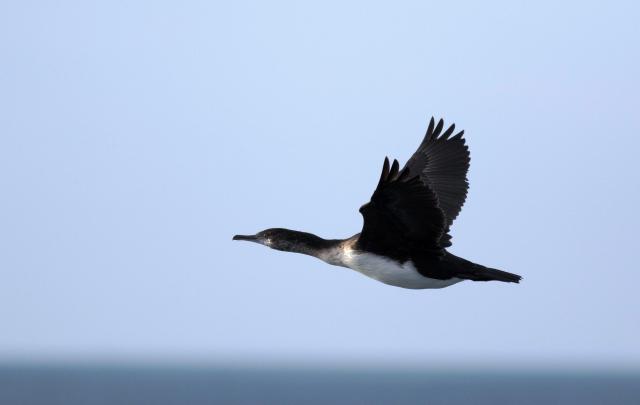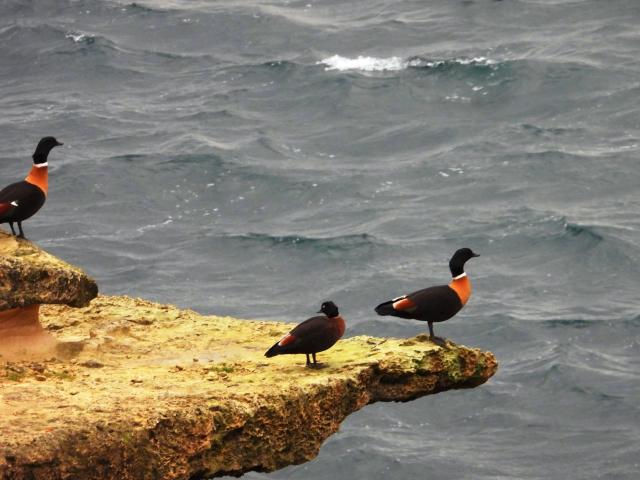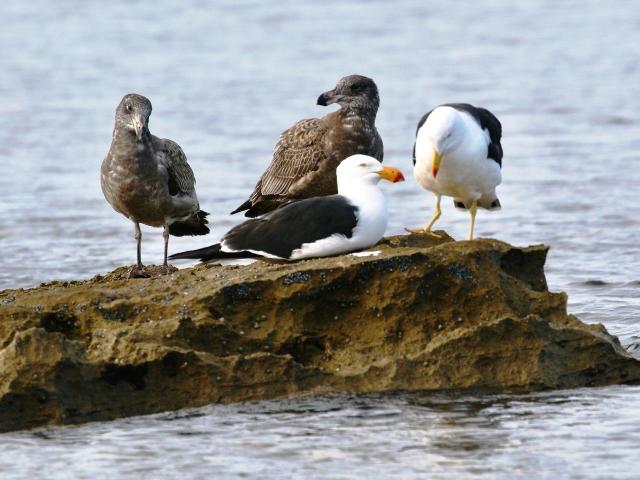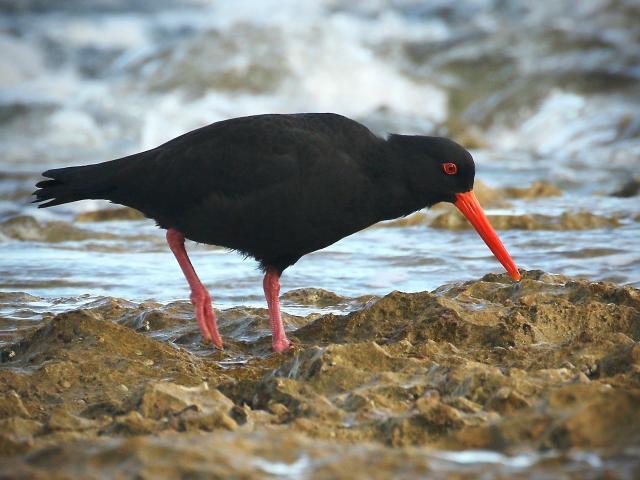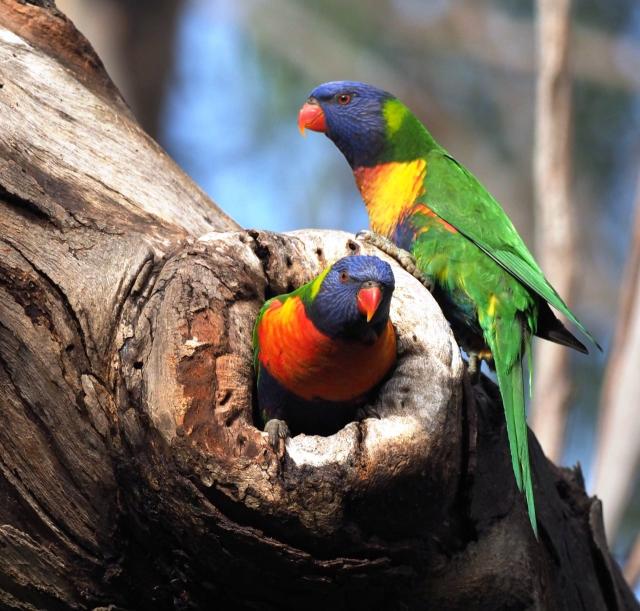I took a voyage on the ferry from Queenscliff to Sorrento and back and loved trying to photograph the magnificent Australasian gannets at Pope’s Eye from the top deck.
Gannets catch fish by forming themselves into a sort of arrow shape and diving headfirst into the water from great heights.
Unfortunately, the gannets didn’t fly near the ferry, but I was thrilled to photograph an immature black-faced cormorant that flew right in front of me.
Black-faced cormorants are one of the five species of cormorants found in Australia. These birds are seen in the southern areas of Australia, only around coastal habitats, and unlike the other cormorant species are not seen in inland ponds.
On the subject of birds seen in coastal areas, Kevin sent me some great photos of some birds he observed at Point Lonsdale near the lighthouse. The sooty oystercatcher in Kevin’s photo is one of a pair that seem to be hanging around the area currently. There were quite a few Crested Terns on the island and cliffs, and a pair of Pacific gulls with two immature birds, perhaps a family of these gulls.
Carole sent me some photos that she took when she went for a drive along the Great Ocean Road on a day that was blowing a gale, with frequent scatters of showers. The weather was shocking, but she didn’t have a choice on the day to travel.
Carole and her friend decided to stop once in between showers and they raced to a cliff top viewing area to see the violent, rough seas. Once Carole focused through the gales, she was amazed to see Australian shelducks roosting on the cliffs. There wasn’t just one little family, and they tottered on the edges of the mainland as well as out in the oceanic cliffs on tiny islands.
Carole loved how their colours blended in with the sandstone rocks, and they certainly weren’t fazed by the adverse weather.
I must say that I’ve seen shelducks by the hundreds in paddocks or in ponds but never on a cliff. I read on the Birdlife Australia website that the nest of the Australian shelduck is usually in a large tree hollow, but they have been known to breed in rabbit burrows, and in large hollows on cliff faces.
I received an email from Alan, who ventured to the Basin Reserve on the Bellarine as he has been keeping an eye on some nesting holes that rainbow lorikeets have been investigating.
Alan’s timing was perfect on the day he visited the Basin, and as he walked up to one of the hollows, the second of two birds entered the tree hollow which gave him a chance to position himself behind a bush directly in front.
Both Alan and Kevin explored Blue Waters Lake in Ocean Grove.
Alan observed many eastern rosellas around the lake, and a few nankeen night herons on the south side of the lake, including an immature bird.
Kevin saw two or three white plumed honeyeaters and the usual swamphens, spoonbills and Australasian grebes as well as the nankeen night herons in three different trees, including a eucalypt.
Alan also ventured out last week to a windy Lake Victoria, and spotted a solitary, red-necked avocet in amongst a flock of ducks. I’ve usually seen red-necked avocets in a flock, so hopefully this bird will be joined by some other avocets soon.
I received an email from Sue, who was visiting the Bellarine and was wondering where she could see a yellow-tailed black cockatoo. I unfortunately couldn’t point Sue in a direction where she could definitely see one of these beautiful birds, as they do move around a lot and can be here one day and gone the next.
I saw a flock of about 20 of these birds in between Leopold and Moolap on my way home from work one night.

